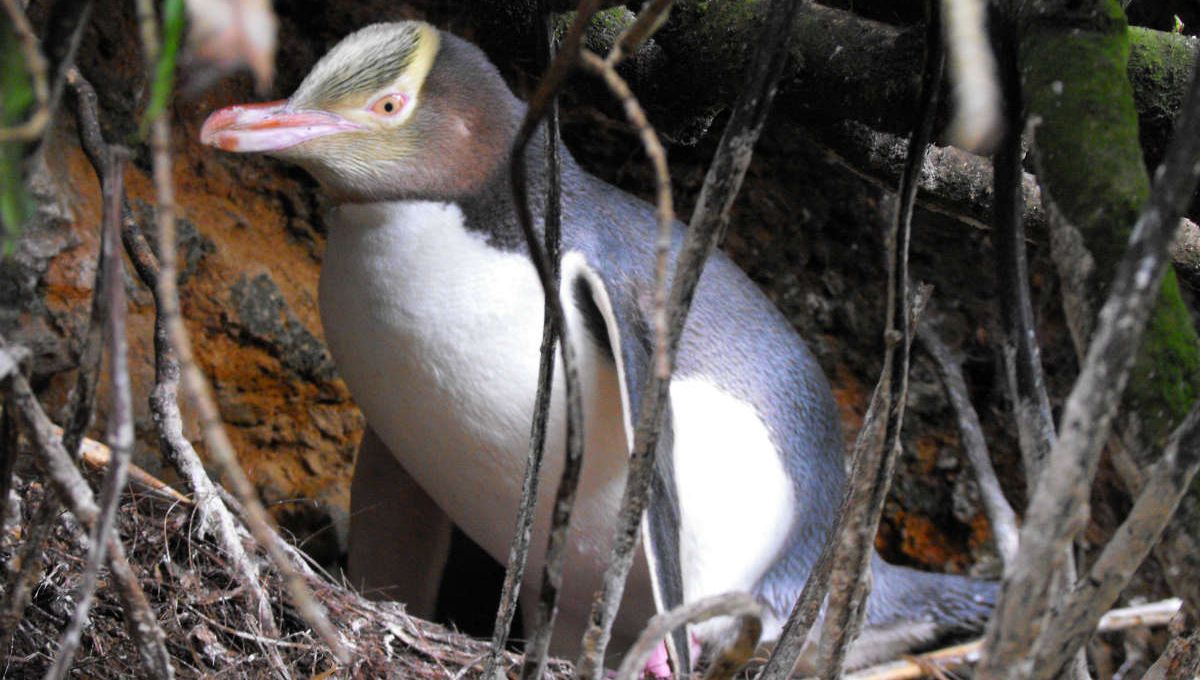
Genetic analysis of the hoiho, also known as the yellow-eyed penguin, has revealed that this species is in fact made up of three distinct subspecies – knowledge that could be crucial in preventing these rare and notoriously shy birds from going extinct.
Found solely on the New Zealand mainland and Enderby and Campbell Islands, the hoiho (Megadyptes antipodes) was already a pretty intriguing bird; you can’t miss those bright orangey-yellow eyes, it’s got a shrill call that simply can’t be ignored, and, unusually for penguins, it makes its nest sites under dense vegetation. No wonder it’s won New Zealand’s Bird of the Year twice.
It’s also endangered, with the population having significantly declined over the last 30 or so years to the point where it’s now estimated that there are only 2,600 to 3,000 mature individuals left in the wild, with fewer than 150 breeding pairs on the mainland. The continued decline of the species is thought to be driven by a range of factors, including habitat loss and bycatch mortality, though the rise of a disease among hoiho chicks since 2019, known as respiratory distress syndrome (RDS), has also had a significant impact.
Understanding the biological blueprint of endangered species like the hoiho is a critical part of conservation; it can help scientists to see where a species might have vulnerabilities, such as the ability to fight off disease or adapt to changing environments.
With that in mind, researchers from the University of Otago – Ōtākou Whakaihu Waka, the Department of Conservation, and Ngāi Tahu set to analyzing the DNA of 249 yellow-eyed penguins from across the mainland and Enderby and Campbell Islands.
In the resulting paper, which is a preprint and yet to be peer-reviewed, the team “unexpectedly” discovered evidence within the penguins’ genomes that was “consistent with recognition of three distinct subspecies.”
Further analysis that compared the genomes with those of two extinct species of penguin revealed that these three subspecies were “deeply divergent lineages”, having separated from each other some time between 5,000 and 16,000 years ago.
The findings may help to explain why the Southern population of hoiho shows no signs of RDS compared to Northern populations, although the study authors say that whether or not genetic differences are involved “remains an open question” that requires further research.
Regardless, it’s hoped that the discovery of three subspecies will help to fine-tune efforts to protect the penguins, particularly with the mainland population being so vulnerable.
“Recognising three subspecies acknowledges the cultural and biological diversity within hoiho and ensures conservation efforts that are tailored for each population,” said study author Dr Mel Young, from the Department of Conservation, in a statement.
And it’s important that those efforts come as soon as possible. “For the northern population, extinction is not a distant possibility, it is an imminent threat,” said Lisa Argilla, fellow study author and Dunedin Wildlife Hospital veterinarian. “Without urgent, bold and collaborative action, we risk losing these precious birds forever.”
The study is posted to bioRxiv.
Source Link: One Of The World’s Rarest Penguins Is Actually Three Subspecies In A Trench Coat